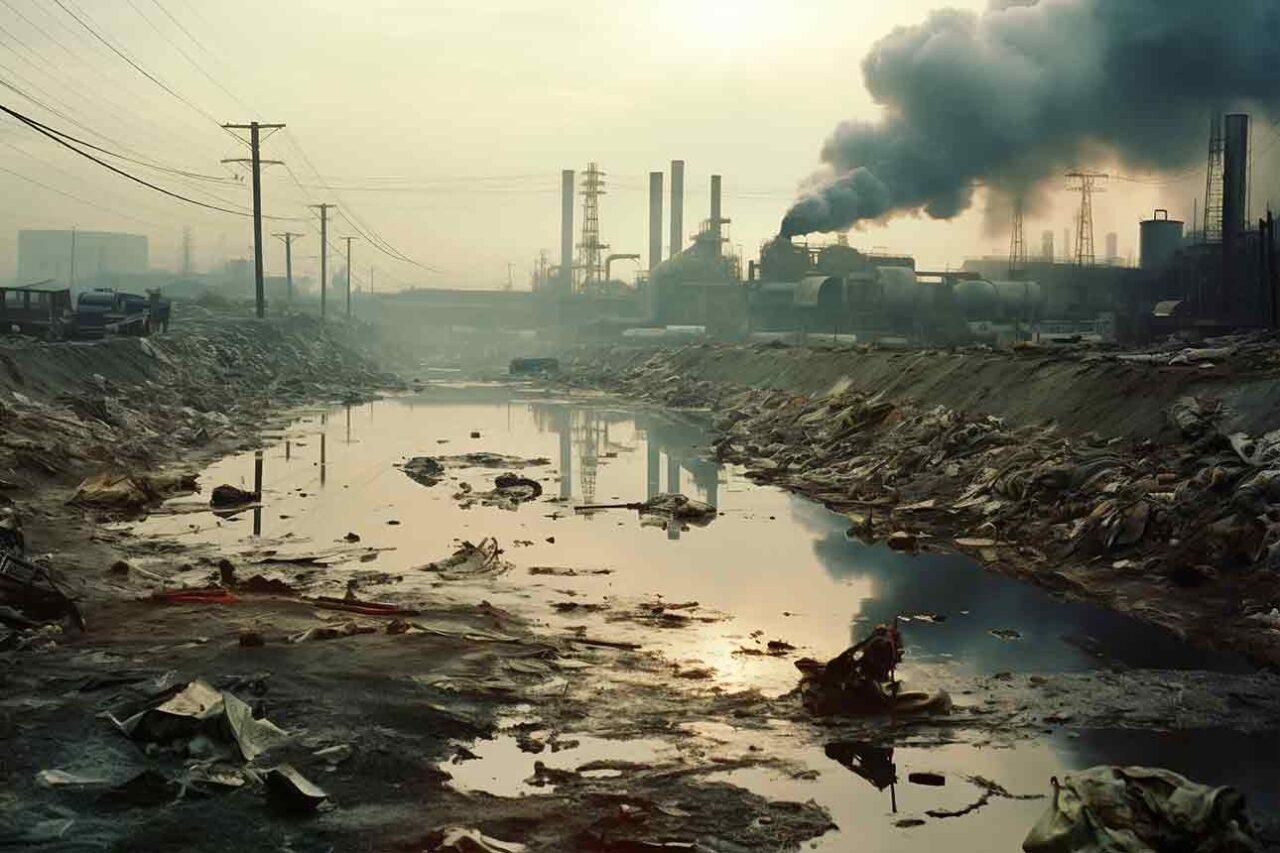What is Industrial Waste?
Across the globe, there exist millions of factories, mills, industrial facilities, mining plants, and more. These industries harness raw materials to craft finished products for consumers. However, within the manufacturing process, certain materials become redundant, giving rise to what is known as industrial waste.
This toxic waste encompasses various materials, including metals, paints, sandpaper, slag, ash, and even radioactive waste.
In this article, we shall delve into different categories of industrial waste and explore their disposal methods.
Types of Industrial Waste
There are generally two types of waste; waste, which can break down naturally, and nonbiodegradable waste, which cannot decompose easily.
- Biodegradable
Industrial waste that is refers to materials that can be naturally broken down into substances, by specific microorganisms. It has similarities, with household waste in terms of how it can decompose. These types of waste typically originate from sectors such as food processing, dairy production, textile mills, and slaughterhouses. Examples include paper, leather, wool, animal bones, and wheat. They lack inherent toxicity and generally do not necessitate special treatment procedures. Treatment methods for biodegradable industrial waste encompass processes like combustion, composting, gasification, and bio-methanation, among others.
- Non-biodegradable
Non-biodegradable industrial refuse encompasses substances that defy decomposition into benign components. These include plastics, fly ash, synthetic fibers, gypsum, silver foil, glass artifacts, and radioactive detritus. These residues emanate from various industries, such as iron and steel production, fertilizer manufacturing, and the chemical, pharmaceutical, and dye sectors.
It is worth noting that approximately 10 to 15 percent of the total industrial refuse falls within the non-biodegradable and perilous category, with its volume steadily increasing annually. These materials resist facile disintegration, thereby posing a menace to the environment and its inhabitants. They accumulate within the ecosystem, infiltrating the bodies of wildlife and flora, consequently engendering an array of maladies.
Nonetheless, technological progress has engendered the formulation of diverse disposal and recycling methodologies. Industries now adeptly manage and repurpose residual materials generated by other sectors. For instance, the cement industry efficiently harnesses slag and fly ash, which emerge as by-products of steel production. Furthermore, landfills and incineration have emerged as viable means for the management of hazardous residues.
At Cleanoodle, we are dedicated to providing top-notch services to meet all your cleaning and maintenance needs. Whether you require efficient waste removal, professional cleaning services, or expert painting, our team is here to help. To learn more about our commitment to quality and customer satisfaction, visit our About Us page. For a detailed overview of all the services we offer, check out our Services page. If you have any questions or need assistance, don’t hesitate to reach out through our Contact Us page.
FAQS
What is industrial waste and give an example?
Industrial waste refers to waste generated from manufacturing or industrial processes. Examples of toxic waste include cafeteria waste, soil, and gravel, masonry and mortar, scrap metals, gasoline, solvents, pesticides, vegetation such as weeds and trees, as well as wood and discarded lumber.
What are the 5 types of waste?
Waste can be categorized into five main types commonly encountered in households: liquid waste, solid garbage, toxic waste, radioactive waste, and recyclable waste.
What are examples of domestic waste?
Examples encompass industrial solid waste (akin to household refuse), hazardous waste, wastewater, which includes sewage containing human waste (comprising feces and urine), and runoff from the soil, as well as toxic waste, among others.
How is industrial waste treated?
These methods encompass automated oxidation refinement, distillation, adsorption, ozonation, vitrification, incineration, chemical immobilization, and disposal in landfills. However, for select products like certain detergents that possess biodegradable properties, alternative wastewater treatment approaches are necessary.
What is a real-life example of industrial waste?
Industrial waste is characterized as waste produced by manufacturing or industrial procedures. The varieties of toxic waste produced encompass cafeteria waste, soil and gravel, masonry and concrete, scrap metals, rubbish, oils, solvents, chemicals, vegetation such as weeds and trees, wood, and discarded lumber, along with comparable waste materials.
What are the examples of proper treatment of industrial waste?
Various techniques for toxic waste management include Advanced Oxidation Processing, distillation, adsorption, vitrification, incineration, chemical immobilization, or disposal in landfills. In instances where certain materials, like some detergents, can naturally undergo biological degradation, a modified approach to wastewater treatment may be employed.


